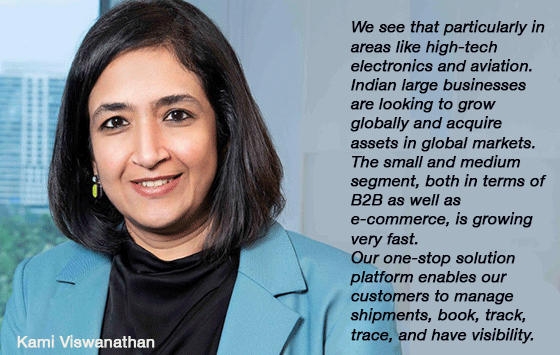 |
Last month as Prada unveiled its future designs included in the offeringwere open-toe leather sandals. The sandals featured design elements of India’s classic, handcrafted footwear popularly known as ‘Kolhapuri chappals’ (pictured above).
The offering from Prada immediately drew protests of copying without acknowledging the geographical source or giving any credit to the artisans of Kolhapur who have created and delivered this footwear for centuries.
The dust-up has brought additional focus on India’s burgeoning efforts to streamline and amplify its unique regional products.
But beyond footwear, the Indian Government’s latest move to promote the ‘One Airport, One Product’ scheme aims to revolutionize India’s logistics landscape, aligning closely with the ‘One District, One Product’ (ODOP) initiative that has gained momentum over the past few years.
In any case the humble Kolhapuri chappal, is enjoying a resurgence of interest both domestically and internationally.
Digging a bit deeper into all of this, a misstep in branding and marketing strategies exposes the challenges faced by traditional crafts in scaling globally without adequate infrastructure and logistics.
The incident highlighted the urgent need for India to attempt a more coordinated effort to promote regional specialties authentically and sustainably, ensuring these iconic products retain their cultural significance while reaching wider markets.
Building new ideas, the government announced a strategic move to assign specific airports across India to handle and promote particular regional products.
The concept is simple: each airport becomes a hub for a designated product, ensuring dedicated logistics, storage, and marketing channels. This initiative aims to reduce transit times, cut costs, and enhance product visibility, thereby making Indian regional specialties more accessible both domestically and for export.
For example, the Chhatrapati Shivaji Maharaj International Airport in Mumbai could become the hub for Maharashtra’s Kolhapuri chappals, while the Kolkata Airport could focus on Darjeeling tea.
This specialization allows for tailored infrastructure, customs facilitation, and targeted marketing campaigns.
The new airport-centric approach dovetails seamlessly with the existing One District One Product (ODOP) initiative, which encourages every district to identify, develop, and promote a unique product. While ODOP emphasizes grassroots development and local entrepreneurship, the ‘One Airport, One Product’ scheme provides the logistical backbone necessary for scaling these products nationally and internationally.
Together, these initiatives aim to create a cohesive ecosystem where regional products are nurtured locally and then propelled onto global markets via dedicated logistics channels.
Adding to the momentum is logistics giant FedEx, which announced in November 2024 its collaboration with Invest India to support India’s One District One Product initiative and aim to boost the growth of Indian small businesses by providing them with access to global markets, capacity building, and branding opportunities.
“By providing comprehensive support to local artisans and manufacturers, the program enhances livelihoods and showcases the rich diversity of Indian craftsmanship. This initiative underscores India’s commitment to the Make in India vision, fostering innovation and enabling local businesses to compete on the global stage,” Kami Viswanathan, president, FedEx, Middle East, India Subcontinent, and Africa (MEISA) said.
 |
FedEx’s investment includes establishing dedicated cargo facilities at key airports and integrating advanced tracking and supply chain management systems. This partnership underscores the recognition that efficient air cargo operations are vital to India’s export ambitions.
Experts we spoke to are optimistic. Consensus of thought reports that by channeling regional products through dedicated airports, India could significantly increase its air cargo volumes.
Currently, India’s air cargo comprises a relatively small share of total freight, but with focused infrastructure and branding, the country could see a surge in high-value, time-sensitive exports like handicrafts, organic produce, and textiles.
However, the impact depends on multiple factors: infrastructure upgrades, policy support, and the ability to overcome logistical bottlenecks.
Despite the promising outlook, several hurdles remain.
• Infrastructure Gaps: Many airports and regional hubs require modernization to efficiently handle the increased cargo volumes.
• Coordination Complexities: Synchronizing efforts between central agencies, state governments, and private players demands robust governance.
• Cost and Logistics: Ensuring cost-effective transportation and handling, especially for perishable and fragile goods, remains a challenge.
• Market Awareness: Building global demand for regional products requires sustained branding and marketing efforts.
India’s ‘One Airport, One Product’ initiative, inspired by and integrated with the ‘One District, One Product’ movement and bolstered by private investments like FedEx’s, holds immense potential to transform the nation’s export landscape. While the road ahead is fraught with logistical and infrastructural challenges, the strategic focus on regional specialties and dedicated logistics channels could position India as a formidable player in global high-value exports.
If successfully implemented, this integrated approach could not only boost India’s air cargo tonnages but also preserve and promote its rich regional diversity on the world stage.
Tirthankar Ghosh |





